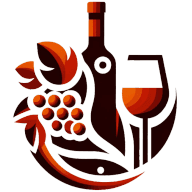Welcome to the world of Merlot, where the labels on the bottles are as rich and complex as the wine itself. This blog post aims to help you decipher these labels, making your Merlot selection process more informed and enjoyable. We'll dive into the nuances of Merlot wine labels, from the basics to the specifics, and by the end, you'll be able to read a Merlot wine label like a seasoned sommelier.
The Basics of Merlot Wine Labels
Merlot wine labels carry a wealth of information. They tell you about the wine's origin, the type of grapes used, the year of production, and sometimes even the vineyard's specific plot. Understanding these basics is the first step towards becoming a Merlot connoisseur.
The country of origin is often the most prominent information on the label. Merlot, a grape variety that thrives in both cool and warm climates, is grown worldwide. However, the most renowned Merlot wines come from France, particularly Bordeaux, and the United States, specifically California.
The label also mentions the vintage, the year the grapes were harvested. The vintage can significantly impact the wine's taste as weather conditions vary from year to year. A good vintage means ideal weather conditions, leading to a potentially great wine.
The grape variety, in this case, Merlot, is also stated on the label. In some regions, like Italy and France, the wine label may instead mention the region, like 'Bordeaux', which implies the use of Merlot grapes.
The Intricacies of Merlot Wine Labels
Delving deeper into Merlot wine labels, you'll encounter terms like 'Reserve', 'Estate Bottled', and 'Old Vines'. These terms, while not regulated in every country, generally indicate a higher quality wine.
'Reserve' often suggests that the wine has received extra care, possibly aging longer before bottling. 'Estate Bottled' means the winery has grown, produced, and bottled the wine on their property, ensuring control over the entire process. 'Old Vines', or 'Vieilles Vignes' in French, implies that the wine comes from older grapevines, which typically produce more concentrated and flavorful wines.
The alcohol content, usually expressed as a percentage, is another crucial detail on the label. Merlot wines typically range from 13.5% to 15% alcohol by volume (ABV). A higher ABV often indicates a riper, more full-bodied wine.
The Artistry of Merlot Wine Labels
Beyond the practical details, Merlot wine labels also offer a glimpse into the winery's personality and history. The artwork, colors, and typography used can tell a story, making the wine-drinking experience even more enjoyable.
Some labels feature the winery's crest or emblem, hinting at a rich history and tradition. Others may use modern, abstract designs, suggesting a more contemporary approach to winemaking. The choice of colors can also reflect the wine's character. For instance, deep, dark colors might indicate a robust, full-bodied Merlot.
French vs. American Merlot Labels
There are notable differences between French and American Merlot wine labels. French labels often emphasize the wine's origin, with the region or appellation taking center stage. They might not even mention Merlot, as the grape is implied by the region.
American labels, on the other hand, typically highlight the grape variety, with 'Merlot' prominently displayed. They also often include the vineyard or winery name and the specific region or AVA (American Viticultural Area).
These differences reflect the contrasting wine philosophies. The French believe the 'terroir', the unique combination of soil, climate, and geography, plays a significant role in shaping the wine's character. Americans, while also valuing terroir, tend to focus more on the grape variety.
Deciphering European Classification Systems
European Merlot wine labels, particularly French, can be more challenging to understand due to their classification systems. In Bordeaux, for instance, wines are classified based on the chateau or estate's reputation and quality.
The highest classification, 'Premier Cru', is reserved for the best wines, like Chateau Petrus, a predominantly Merlot wine. Understanding these classifications can help you choose a quality Merlot wine.
The Impact of Labeling Laws
Labeling laws also influence what information appears on Merlot wine labels. These laws vary by country and can dictate the inclusion of details like the grape variety, region, vintage, and alcohol content.
In the U.S., for example, if a wine label states a specific grape variety, like Merlot, at least 75% of the wine must be made from that grape. In France, labeling laws are even stricter, with stringent rules governing appellations and classifications.
Unveiling the Secrets of Merlot Wine Labels
Understanding Merlot wine labels is like learning a new language. It might seem daunting at first, but with a bit of knowledge and practice, you'll soon become fluent. Remember, the label is more than just a pretty face; it's a window into the wine's soul, offering valuable insights into its origin, quality, and character. So, the next time you pick up a bottle of Merlot, take a moment to read the label. You might be surprised at what you discover.

